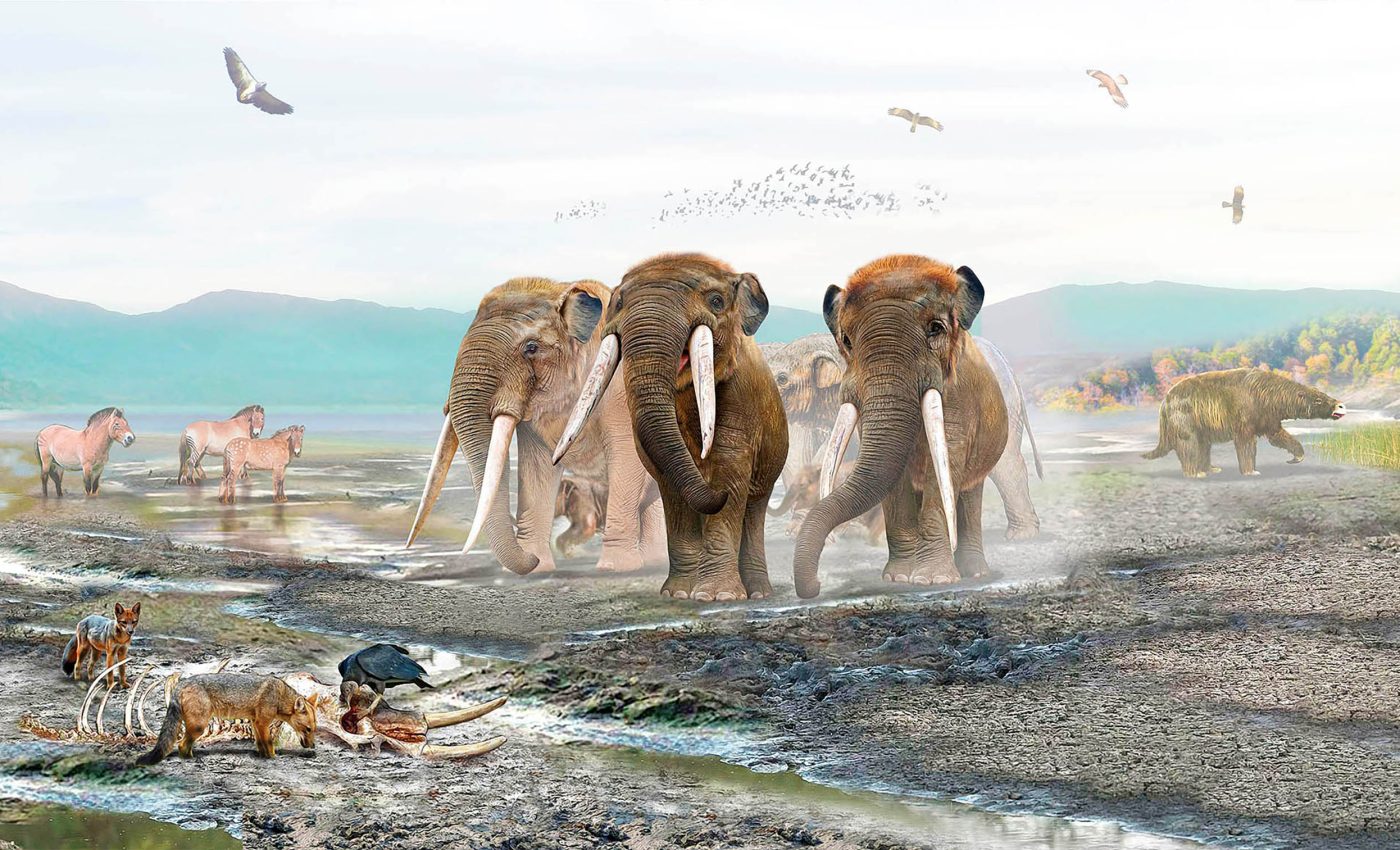
Mastodon extinction is still causing problems with South American ecosystems
The disappearance of South America’s mastodons some ten millennia ago did more than erase a charismatic animal; it severed an ancient partnership that once spread the seeds of large-fruited trees across the continent.
A new study shows that these elephant-like creatures were habitual fruit-eaters and indispensable couriers of botanical life. This helps explain why several modern tree species now teeter on the brink of extinction.
An international research team examined ninety-six fossil molars of Notiomastodon platensis collected along a 1,500-kilometer sweep of Chilean coastline.
Using microscopic wear patterns, chemical fingerprints locked in tooth enamel, and residues trapped in dental calculus, they pieced together the animal’s menu.
Fossil traces reveal fruit diet
Florent Rivals is a researcher at the Catalan Institute for Human Palaeoecology and Social Evolution (IPHES-CERCA).
“We found starch residues and plant tissues typical of fleshy fruits, such as those of the Chilean palm (Jubaea chilensis),” he said.
Those tiny traces, preserved since the Pleistocene, provide the first direct evidence that the mastodon routinely swallowed whole fruit – and by extension the seeds buried inside.
Stable-isotope signatures reinforced the picture. “Through stable isotope analysis, we were able to reconstruct the animals’ environment and diet with great precision,” said Iván Ramírez-Pedraza, a researcher at IPHES-CERCA who helped chart the chemical trail.
The pattern points to a mixed woodland rich in fruit resources, the kind of landscape where a multi-ton mammal could feast while roaming long distances.
Testing a forty-year-old idea
Back in 1982, biologist Daniel Janzen and paleontologist Paul Martin suggested that many tropical trees evolved oversized, sugary fruits specifically to lure now-extinct megafauna.
These included mastodons, giant sloths, and native horses – animals capable of gulping down the bounty and depositing viable seeds far from the parent plant.
Their “neotropical anachronism” hypothesis was ingenious but largely speculative. The new study supplies the hard proof those pioneers lacked.

Lead author Erwin González-Guarda of the University of O’Higgins argued that the multi-proxy approach was crucial.
Conventional wear studies alone cannot distinguish leaves from soft fruit, while isotopes reveal diet breadth but not specific ingredients. Residual microfibers in dental plaque filled that gap, confirming that fruit made up a regular part of the mastodon’s meals.
Mastodons spread forest seeds
“Dental chemistry gives us a direct window into the past,” said co-author Carlos Tornero, an isotope specialist at IPHES-CERCA.
The team concludes Notiomastodon was a key long-distance seed disperser in late Pleistocene South America.
When the animals died out – probably under combined pressure from rapid climate shifts and expanding human hunting – no substitute of equal size and wanderlust remained.
Tapirs, peccaries, and monkeys still disperse some fruit in tropical zones, but across central Chile, the ecological courier service is effectively bankrupt.
Forests feel the absence
The researchers ran a machine-learning analysis to gauge present-day risk for plants once dependent on megafaunal dispersers.
In central Chile, forty percent of those trees now sit on threatened or endangered lists – four times the proportion in regions where alternative animal carriers survive.
“Where that ecological relationship between plants and animals has been entirely severed, the consequences remain visible even thousands of years later,” said co-author Andrea P. Loayza, paleontologist at the Institute of Ecology and Biodiversity (IEB) in Chile.
Today the Chilean palm endures in a few fragmented groves. The monkey-puzzle tree, Araucaria araucana, iconic yet genetically impoverished, clings to high Andean ridges.
The gomortega, Gomortega keule, known locally as queule, hangs on in scattered coastal valleys. Its plum-sized fruit now mostly drops beneath the parent canopy, rather than being hauled kilometers away inside a mastodon’s gut.
Forests, seeds, and mastodons
Beyond its detective work, the paper carries a cautionary message. Ecosystems retain the impact of lost species for millennia, and restoring their roles will be a major challenge.
Rewilding with living large herbivores has been floated as one possibility, and the fresh Chilean data offer a benchmark for choosing modern analogues based on diet and ranging behavior, not just body mass.

“By combining different lines of evidence, we’ve been able to robustly confirm their frugivory and the key role they played in these ecosystems,” Tornero emphasized.
Conservation managers might use such findings to prioritize corridors that allow surviving mammals to move seeds. They could also experiment with human-mediated dispersal for tree species marooned by the mastodon’s absence.
Old bones, new purpose
“Paleontology isn’t just about telling old stories,” Rivals concluded. “It helps us recognize what we’ve lost – and what we still have a chance to save.”
With climate change and habitat fragmentation tightening their grip, lessons from deep time may guide present-day action.
Protecting and, where possible, mimicking the ancient partnership between fruit-bearing trees and their gigantic gardeners could give endangered South American forests a second shot at resilience.
The study is published in the journal Nature Ecology & Evolution.
—–
Like what you read? Subscribe to our newsletter for engaging articles, exclusive content, and the latest updates.
Check us out on EarthSnap, a free app brought to you by Eric Ralls and Earth.com.
—–













